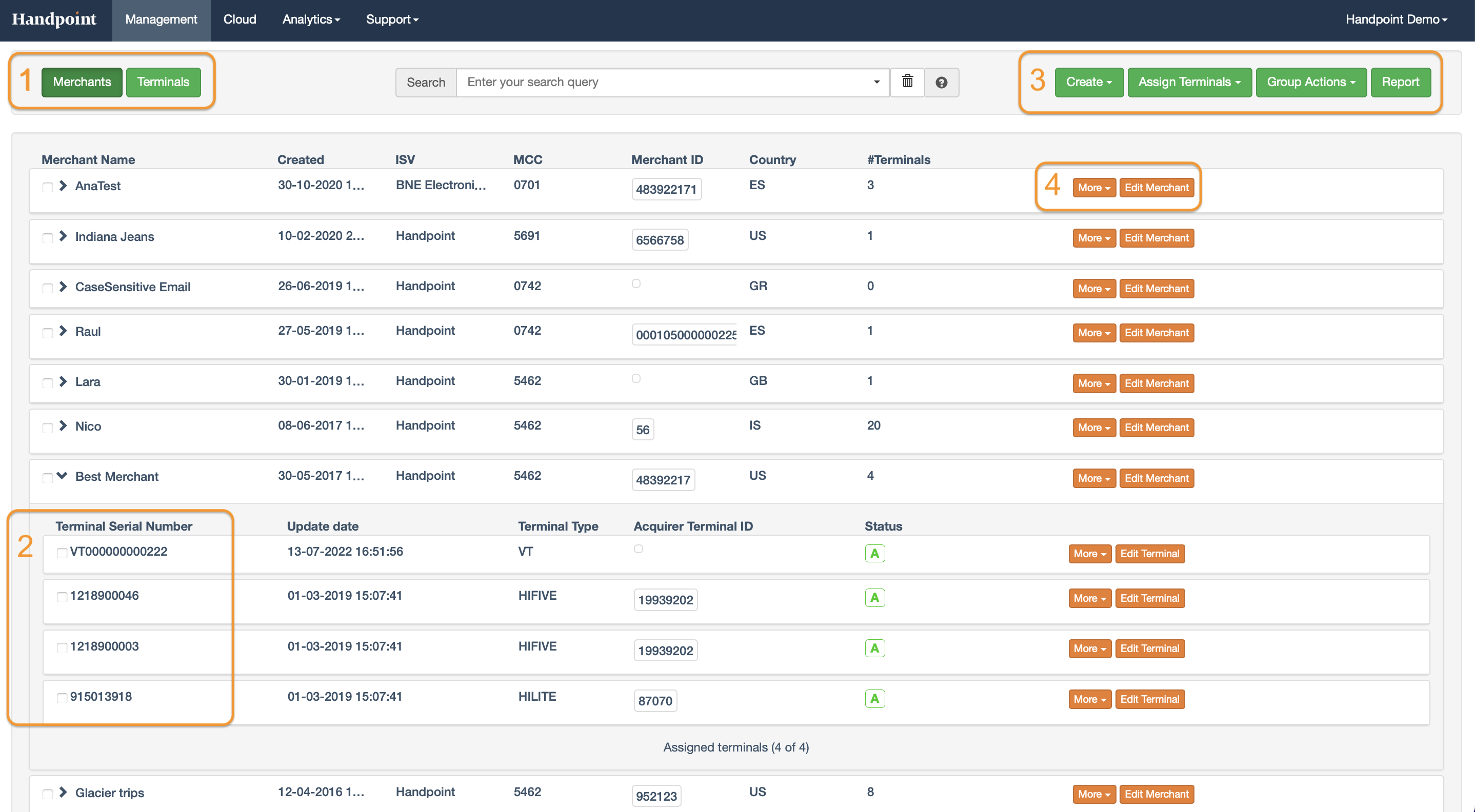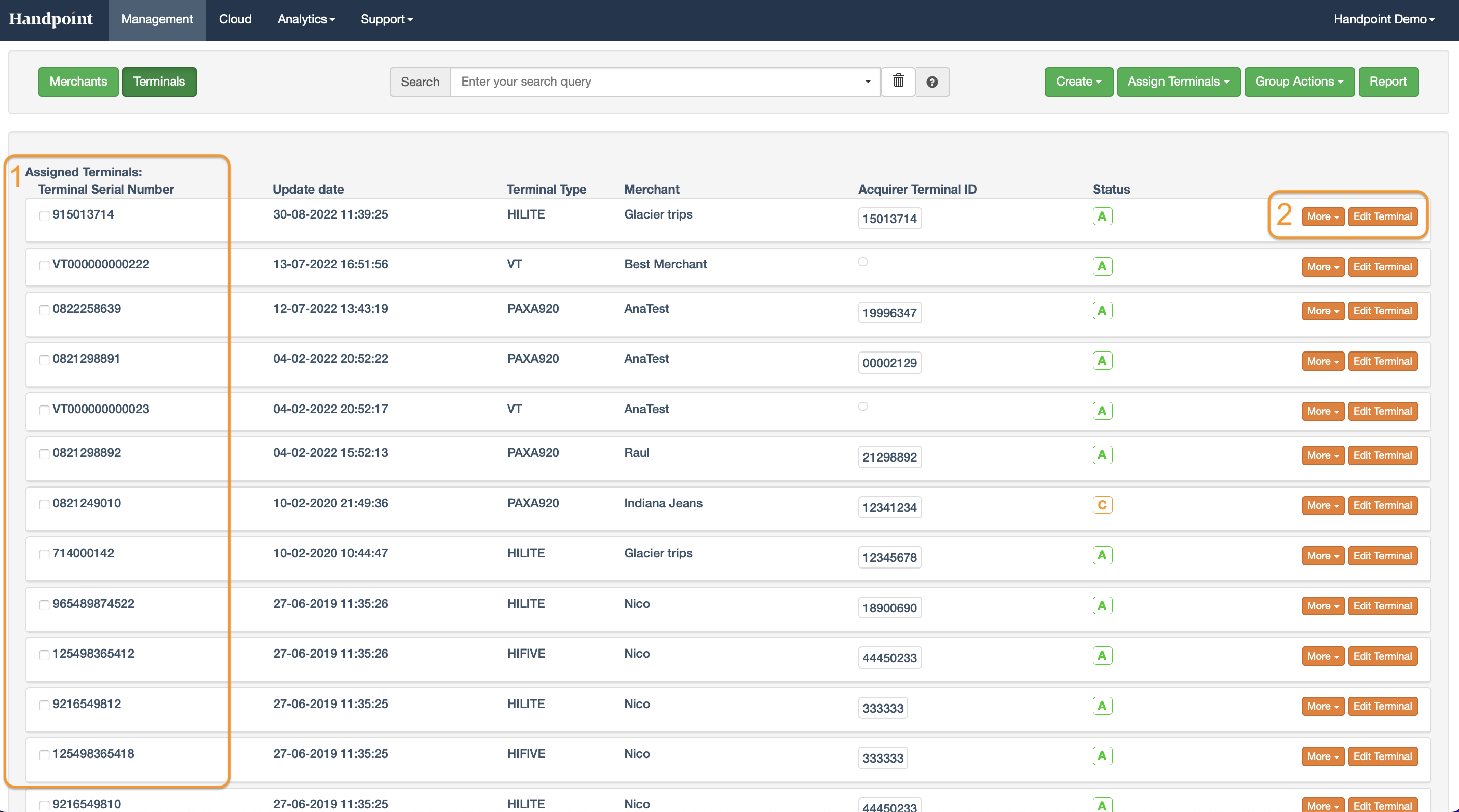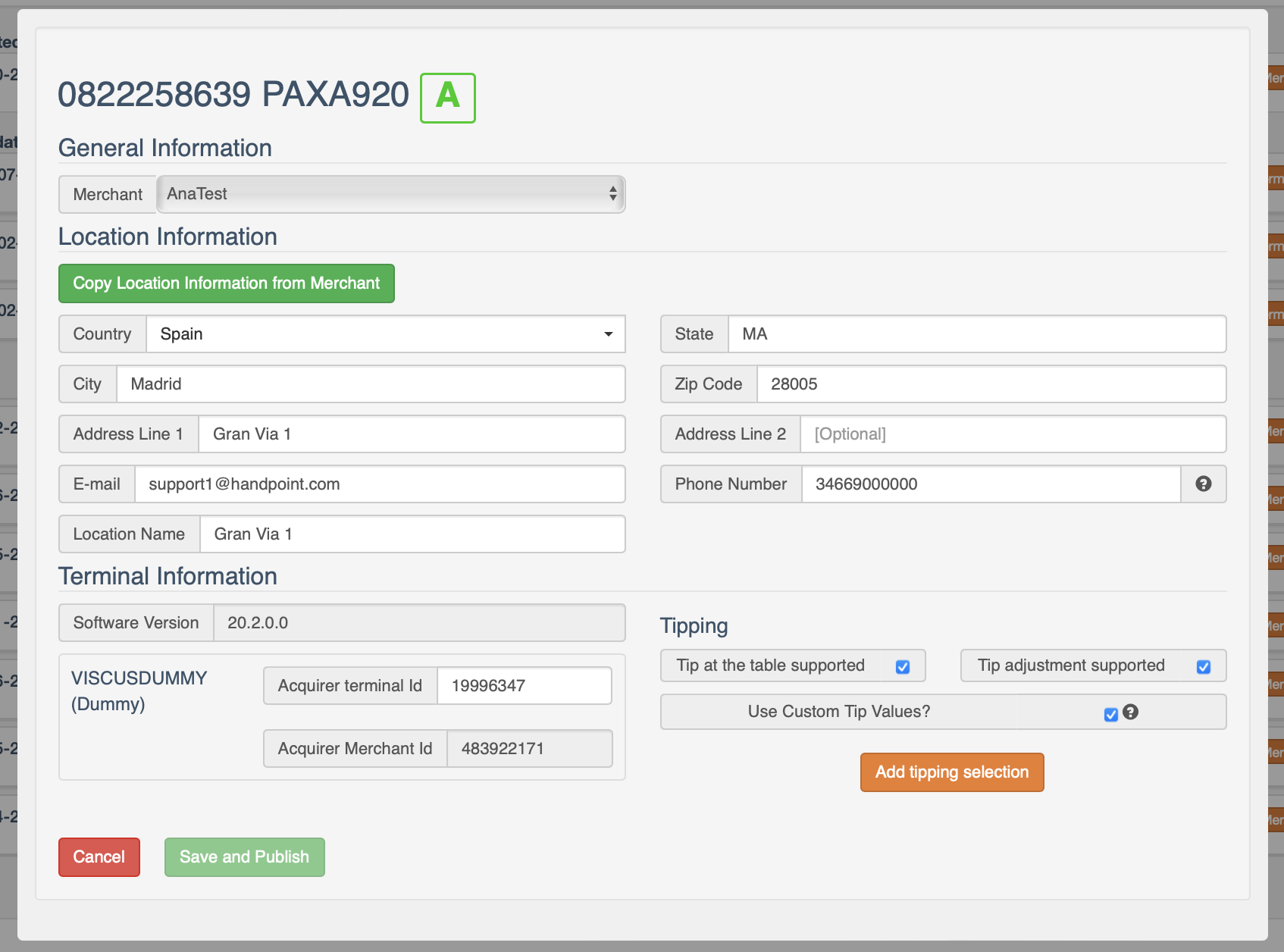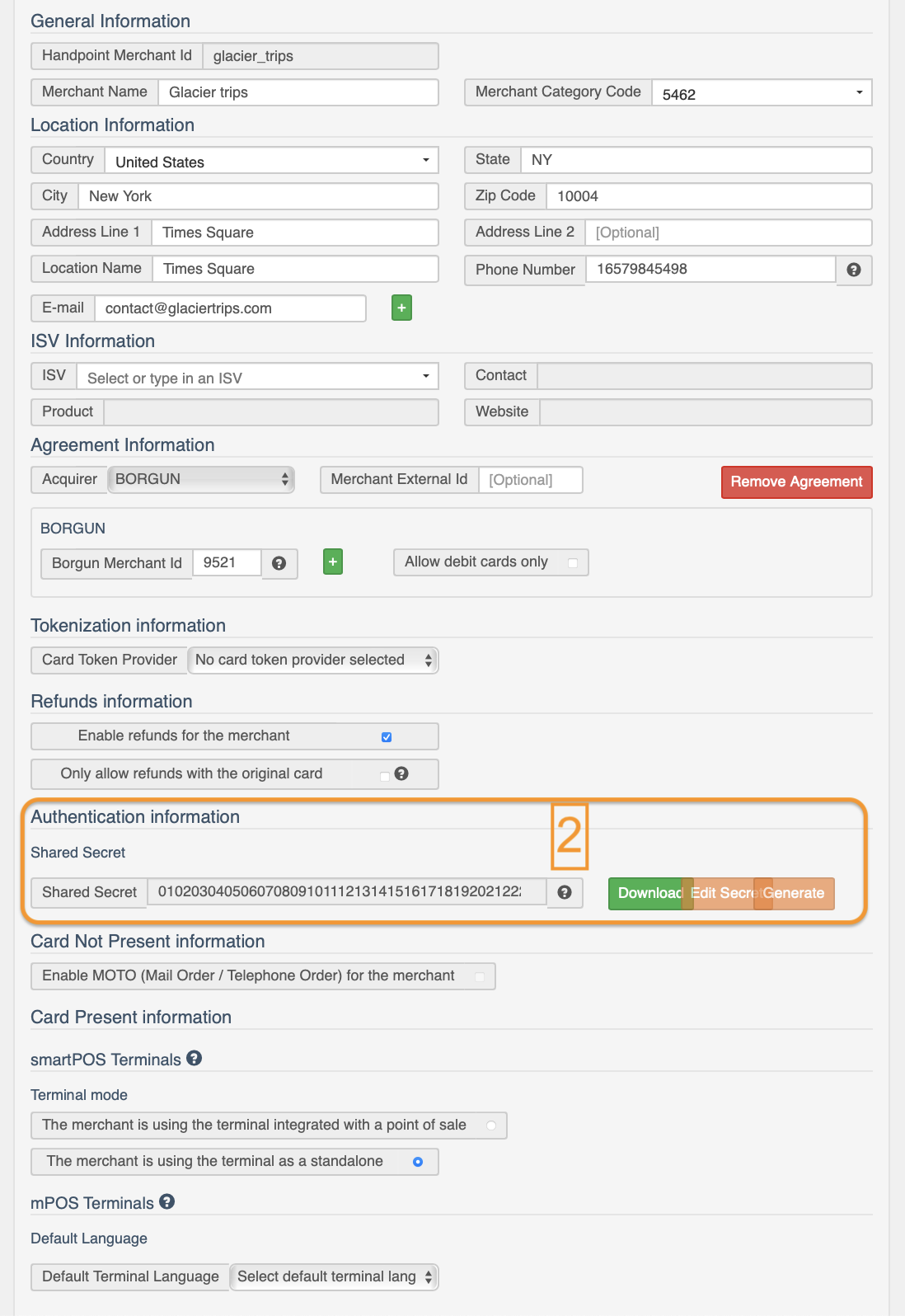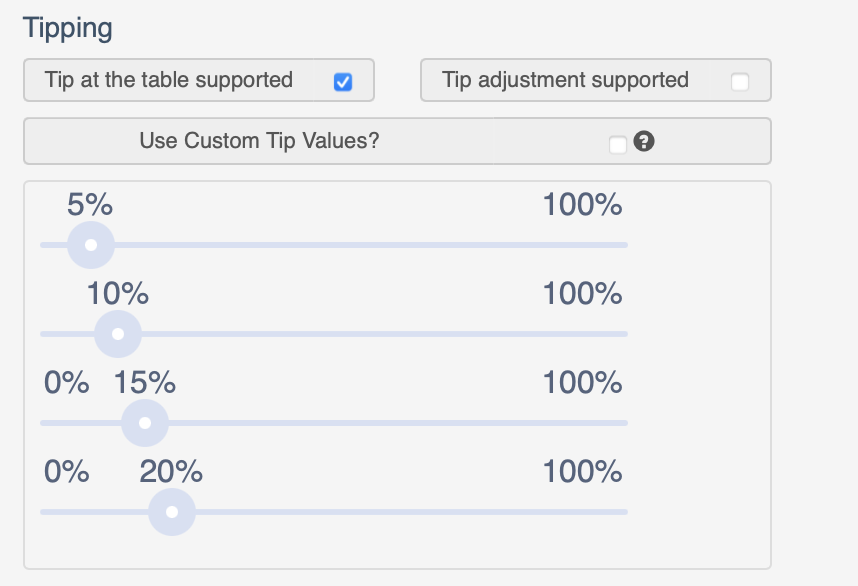Handpoint is proud to offer an online portal for Terminal Management System, the place to manage your merchants and their card readers. Please get in touch with us if you would like to learn more about how you can get access to it.
Introduction to TMS
The Handpoint portal TMS is a web-based terminal management system for easy setup and management of your merchants.
Who is it for?
It's meant for any organisation that needs to manage and onboard merchants on the Handpoint platform.
How is it used?
Within the Handpoint portal TMS, you are able to setup your merchants, terminals and to extract the merchant key (Shared Secret Key and/or API key).
Gaining access to Handpoint TMS
Access to the Handpoint portal TMS is provided to selected partners and is requested through your account manager.
The following basic information is needed to create a new partner profile:
Partner’s name
Name of organisation, company, etc
Location information (Address, City, Zip Code, State and Country)
Contact information (Phone number, Email)
NOTE: You will receive login information via email after your organisation has been set up in the TMS. An organisation might be provided with more than one login if to the TMS. This can occur if a reseller is supporting multiple SWPs or if an SWP is working with more than one processor.
Getting Started in the TMS - Front page
The TMS front page provides you with quick access to the most common actions you can take.
From here you can create merchants and assign terminals, or go directly to your management view of your merchants and terminals.
Create Merchant: This allows you to set up a new merchant.
Assign Terminals to Merchant: This allows you to assign card readers to a specific merchant.
Assign Terminals to Partner: This allows you to assign a bulk of card readers, so you have them available for assignation to your merchants.
User profile
Clicking the dropdown menu on the right lets you update your user profile.
Change User Password
We strongly recommend changing the password when Handpoint creates a new user for an SWP.
This is done by clicking on User Profile. It will require to enter the assigned password and the new one of your choice. Your password must be at least 8 characters long and include both numeric and alphabetic characters.
Management page
The management page provides you with a detailed view of your onboarded merchants.
From one single page, you can setup merchants, assign terminals, and access all the related actions. The information can be grouped by merchants or viewed as a list of terminals. The data can be filtered by different parameters using the top search bar.
Management Page Navigation
Information can be grouped by merchants or viewed as a list of terminals. In this case, the merchant view is displayed.
This is the hierarchical view of terminals assigned to merchants, starting with the most recent one.
Here you have a quick access to common action: create new merchants, assign multiple terminals, manage a group of terminals, generate a Report on the devices assigned to each merchant.
More dropdown and Edit Merchant:
More: Allows to generate and consult the available API Key of the merchant, Reset the merchant password and Delete the merchant.
Edit merchant: Merchant information can be updated here if needed, and below this, terminal information can be updated.
A list of your assigned/unassigned terminals can be found here. Contact Handpoint to have new terminals added to this list.
More dropdown and Edit Merchant:
More: Unassign terminal from the merchant
Edit terminal: Terminal information can be updated here if needed.
Searching and Filtering
The TMS comes with a powerful filtering tool to help you quickly find what you need. The results are presented dynamically on the screen. The search dataset is defined by the selected view (Merchants or Terminals). To see the complete list of results of your search, just press Enter.
Searching terminals: On the Terminals screen (click on the Terminals button on the page), simply enter part of the terminal's serial number into the search bar – the last 4 digits should suffice. The results list updates automatically when it finds data matching the criteria.
Searching merchants: On the Merchants screen (click on the Merchants button on the page), simply enter what you are looking for into the search bar – at least 3 characters. You can search by fields such as merchant's name, location, ID, category code, etc. The results will be updated automatically.
Creating a Merchant
The Handpoint TMS requires just a few pieces of information to set up and activate a merchant in just a few minutes:
Merchant’s information (including MID provided by the processor).
The serial number(s) of the Handpoint card reader(s)
Use the VAR sheet to CREATE a merchant profile in the TMS
Next, use the TMS to ASSIGN the correct card readers to that merchant and easily EDIT special terminal features, e.g., tipping
Finally, the TMS generates a SHARED SECRET that is the “key” for merchants’ terminals. This key must be provided to an SWP (Software Partner) if they are storing the keys, or to the merchant directly if they are using the Handpoint app.
Configuring Merchants
Depending on your agreement with Handpoint, you might need to create and configure the merchants to onboard them into the Handpoint platform. This can be done within a few minutes and with just a few pieces of information. Please contact Handpoint support team if you need to create merchants and have questions about it.
The screen below shows the typical merchant configuration screen. From here you can configure:
Merchant information (Company name, MCC, Location and Contact details, etc..).
ISV (if applicable), Acquirer, and MID.
Parameters for Tokenisation (If it is a card token it will be used).
Card NOT Present payments: MOTO (Mail Order / Telephone Order) can be enabled on this screen.
Allow using Handpoint SmartPOS terminals as a standalone (only for merchants using Handpoint SmartPOS terminals).
Default language and tipping options for merchants using Handpoint mPOS terminals.
You can save an incomplete profile and edit it at a later stage. Once the Merchant Information is complete, you would need to Publish in order to activate the merchant.
Which fields are required?
Typically all fields are required. The system will let you know if some required fields are missing before activating the merchant.
Where is the merchant key?
Partners with Native integrations - the merchant key is found on this screen as Shared Secret Key.
Partners with Cloud integrations - the merchant key can be created when publishing the merchant. Remember to copy or download the Merchant API key at that moment, since afterwards it will not be visible. If necessary, you can create a new API key from the merchant page.
Assigning terminals to merchants
Terminals can be assigned from 3 different places in the Handpoint portal: from the front page, from the top of the management page, or from the options on an unassigned terminal. They all lead to the same process. Only the terminals assigned first to your partner profile are available to be assigned to your merchants.
On the Assign terminal screen, you are able to select a merchant and one or more terminals to assign to it. The terminals are identified by the Serial Number found on the back of the card reader. If you don’t found the Serial Number in the list of available terminals, it may be that it is assigned to another merchant or that it is not yet assigned to your profile.
Editing a terminal
Editing a terminal is the final stage in the merchant onboarding.
To Edit a terminal, locate the terminal in the management view and click Edit terminal. You can duplicate the information from the merchant setup to speed up the process. The fields required on this step might differ depending on which processor the merchant is setup for.
In order to make the changes effective, save and publish when done.
Can I start creating a merchant without assigning terminals?
Yes. It is very possible to first create the merchant and add the terminal later on when you know the serial number for the card reader shipped to the merchant.
Where do I locate the Serial Number?
The terminal serial number can be found on the back of the Card Reader and on its packaging. It is a unique identifier for the terminal.
When do changes go live?
Changes are live as soon as they are published. However, changes that propagate to the card reader do not go live until the card reader connects to the gateway, i.e., through a transaction or an update. At that moment, the reader will automatically download the new configuration and update itself. This generally takes less than a minute to complete.
Deleting and unassigning
Deleting a merchant:
Merchants can be deleted (🚨) and terminals can be unassigned. Obviously, deleting a merchant is a high-risk operation and should only be done if there was an error during the onboarding and it is considered quicker to just delete and start over.
Terminals can be unassigned from merchants. This is done if, e.g., a merchant returns the device to you for replacement or to upgrade to an alternative Handpoint device, such as the PAX A920 PRO. Merchants with no assigned terminals are considered inactive.
Unassigning a terminal:
When terminals are unassigned from a merchant they are moved to the list of unassigned terminals (terminals view).
Both deleting and unassigning are done from the More dropdown button next to an item in the management view.
Reusing Terminals
Terminals can be reused and moved from merchant to merchant. In order to do so, the following best practices help ensure a smooth merchant experience and minimise the risk of additional customer support.
PAX devices (PAX A920, PAX A920PRO, PAX A80,…)
Unassign terminal from old merchant
Assign terminal to new merchant
Clear the cache of the device following the instructions.
The terminal will get its new configuration after restarting the application
Datecs devices (HiLite, Hi5,..)
Unassign terminal from old merchant
Assign terminal to new merchant
Update terminal information if needed
Extract and send the shared secret
Perform a flash reset following the instructions
Initiate an update to the card reader
Steps 5 and 6 can be done by the merchant, and require minimal effort.
Locating the Merchant key: Shared Secret
The shared secret is the key to the merchants’ terminals – It is needed by the organisation responsible for storing the key on the behalf of the merchant. Typically it is the SWP’s responsibility.
The shared secret is a randomly generated string of text and is the same for all terminals assigned to a single merchant. It can only be edited by Handpoint admins.
To locate the shared secret click Edit Merchant next to the merchant listed on the management page. This will bring up the Merchant Information screen.
Locate the Shared Secret as shown below. Click on the text to highlight it and Download or copy it.
Tipping Configuration
Handpoint supports tipping on the card reader only on mPOS terminals. If enabled, the cardholder is prompted to tip on the card reader during a sale. The cardholder can choose between preset values, a custom value, or “No Tip”. Tipping is enabled per terminal and custom values can be configured both on a merchant and on a terminal level.
Merchant:
Configure tip values on the Edit Merchant screen. It is possible to use the default values or use custom values that you choose
Terminal:
Tipping must be enabled on a merchant level to further configure the option on a terminal by terminal case if needed. This is done in the Edit Terminal screen.
After making the changes, click Save and Publish.
Other sections on the Handpoint portal TMS
Cloud - Get your API key
Analytics - Get insights of your business and merchants' performance
Support - Video explanation of the most common actions
To learn more about the above, please review the corresponding pages.
If you have any questions, please contact Handpoint support team: support@handpoint.com 📬


